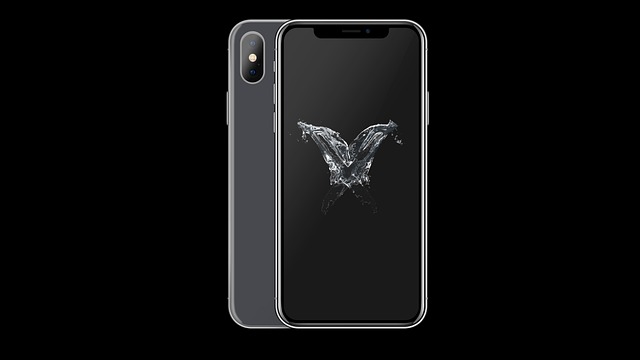The rapid growth of mobile commerce has drastically transformed e-commerce, with businesses prioritizing mobile optimization to stay competitive. A mobile-friendly design is crucial for success due to the convenience and accessibility of mobile platforms, especially among younger users. This involves understanding distinct user behaviors between mobile and desktop, optimizing for speed, implementing clean and intuitive designs, and streamlining checkouts to cater to mobile users' preferences. A mobile-first approach ensures swift loading times, seamless navigation, and attractive product displays on smaller screens, enhancing customer satisfaction and driving conversions. Measuring success through KPIs like conversion rates, load times, and bounce rates is vital for maintaining competitive edge in e-commerce.
In an era where mobile commerce is soaring, optimizing your e-commerce site for a seamless mobile experience is no longer an option—it’s a necessity. This article delves into the crucial aspects of mobile web design, exploring the rapid growth of mobile shopping and its unique challenges. We dissect key differences between mobile and desktop users, highlight the devastating impact of slow loading times, and offer best practices for crafting a mobile-friendly site. From designing for diverse screens to enhancing user experience, we provide actionable strategies to elevate your e-commerce presence in today’s digital landscape, focusing on the essence of a mobile-friendly design.
Understanding Mobile Commerce Growth

In recent years, the rise of mobile commerce has been nothing short of extraordinary. With the ubiquitous use of smartphones and tablets, consumers now expect seamless online shopping experiences on their mobile devices. This shift in behavior has significantly impacted the e-commerce landscape, with more businesses than ever focusing on optimizing their sites for mobile users. Implementing a mobile-friendly design is no longer an option but a necessity to stay competitive in the digital market.
The growth of mobile commerce can be attributed to several factors: convenience, accessibility, and the rise of mobile-optimized platforms. As consumers become more tech-savvy, they appreciate the ease of accessing products and services from their fingertips. A well-designed mobile website enhances user experience, encouraging higher conversion rates and customer satisfaction. This trend is especially prominent among younger demographics who rely heavily on smartphones for daily tasks, including online shopping.
Key Differences Between Mobile and Desktop Users

In today’s digital landscape, understanding the distinct behaviors and preferences of mobile and desktop users is paramount for e-commerce success. Mobile-friendly design goes beyond simply making a website accessible on smaller screens; it involves recognizing the unique challenges and opportunities presented by mobile devices. Mobile users often have limited data plans, slower connectivity, and smaller screen sizes, leading them to prefer simpler interfaces, faster loading times, and seamless navigation. They also tend to engage with content in different ways, such as using their fingers for interactions and browsing on-the-go during short breaks or while commuting.
Conversely, desktop users benefit from larger screens, higher bandwidth, and more stable connections, enabling them to engage with richer media and complex layouts. Their browsing sessions are typically longer, allowing for deeper product exploration and detailed information perusal. These differences underscore the need for a mobile-first approach in e-commerce design, where usability, speed, and adaptability take precedence over desktop-oriented features. Implementing a mobile-friendly design ensures that every user, regardless of their device, has a positive and efficient shopping experience.
Impact of Slow Loading Times on Mobile Shopping

In the fast-paced world of mobile shopping, where users expect instant gratification, slow loading times can have a significant impact on e-commerce success. A study by Google found that 53% of users will leave a website if it takes more than three seconds to load. For mobile sites, this figure is even higher, as users are more likely to abandon an app or mobile webpage if it doesn’t deliver content quickly. This is a critical aspect of mobile-friendly design; optimizing for speed enhances user experience and encourages customers to complete purchases.
When a mobile e-commerce site takes too long to load, it not only frustrates customers but also negatively affects key performance indicators (KPIs). High bounce rates, low time spent on page, and reduced conversion rates are common consequences. Conversely, fast loading times improve engagement, leading to increased browsing and higher sales potential. Implementing strategies like image compression, code optimization, and content delivery networks (CDNs) can significantly reduce load times, ensuring a seamless shopping experience for mobile users.
Best Practices for Creating a Mobile-Friendly E-commerce Site

Creating a mobile-friendly e-commerce site is essential in today’s digital era, as users increasingly access online stores via their smartphones and tablets. To ensure an optimal user experience, several best practices should be implemented. Firstly, prioritize a clean and intuitive layout that adapts well to smaller screens. This means using responsive design techniques to adjust content, images, and navigation elements according to the device’s size.
Secondly, optimize your site’s loading speed, as slow-loading pages can lead to high bounce rates. Compress images, minify code, and leverage browser caching to reduce load times. Additionally, ensure your e-commerce platform offers a seamless checkout process, as mobile users often prefer quick transactions. Keep forms simple, avoid excessive fields, and consider implementing features like one-click payment options for returning customers.
Designing for Different Screen Sizes and Orientations

In today’s digital era, a mobile-friendly design is no longer an option but a necessity for e-commerce businesses to thrive. With users accessing websites from a variety of devices and screen sizes, designing for different orientations has become paramount. Responsive web design techniques ensure that your e-commerce platform adapts seamlessly to each user’s unique setup, be it a compact smartphone screen or a larger tablet display. This adaptability not only enhances the user experience but also boosts engagement and conversion rates.
When crafting a mobile-friendly design, consider the diverse ways users interact with their devices. For instance, navigating on a small screen might require touch gestures, while a larger display could accommodate scrollable content and more detailed product descriptions. Optimizing your site for various orientations—portrait, landscape, and everything in between—ensures that every user can seamlessly browse, compare products, and make purchases without frustration or inconvenience.
Optimizing User Experience (UX) for Mobile Shopping

In the realm of e-commerce, optimizing the user experience for mobile shoppers is paramount. With a vast majority of users accessing stores and making purchases via their smartphones, a mobile-friendly design is no longer an option but a necessity. Implementing a mobile-first approach ensures that your site loads swiftly, navigates intuitively, and displays products attractively on smaller screens. This involves simplifying complex layouts, utilizing responsive images, and streamlining checkouts to minimize friction during the shopping journey.
A seamless mobile UX not only enhances customer satisfaction but also drives conversions. Mobile shoppers expect instant gratification, quick answers to their queries, and a frictionless checkout process. By prioritizing these aspects in your design, you foster trust, encourage repeat visits, and position your e-commerce platform as a top choice among on-the-go consumers.
Measuring Success: Key Performance Indicators for Mobile Web Design

Measuring success is an integral part of any design process, especially in the dynamic realm of e-commerce. When it comes to mobile-friendly design, several key performance indicators (KPIs) come into play. First and foremost, conversion rates are a critical metric; a well-designed mobile site should see an increase in users completing purchases, compared to a non-optimized version. Load times are another vital KPI; faster loading pages on mobile devices enhance user experience and improve retention.
Additionally, bounce rates offer valuable insights into the effectiveness of mobile web design. Lower bounce rates indicate that users are engaging with the site, scrolling deeper, and exploring products or services. Mobile usability testing is also indispensable, allowing designers to gather real-time feedback and identify pain points in the user journey. These KPIs collectively provide a comprehensive view of a mobile-friendly design’s success, ensuring e-commerce sites remain competitive and deliver exceptional experiences across all devices.
